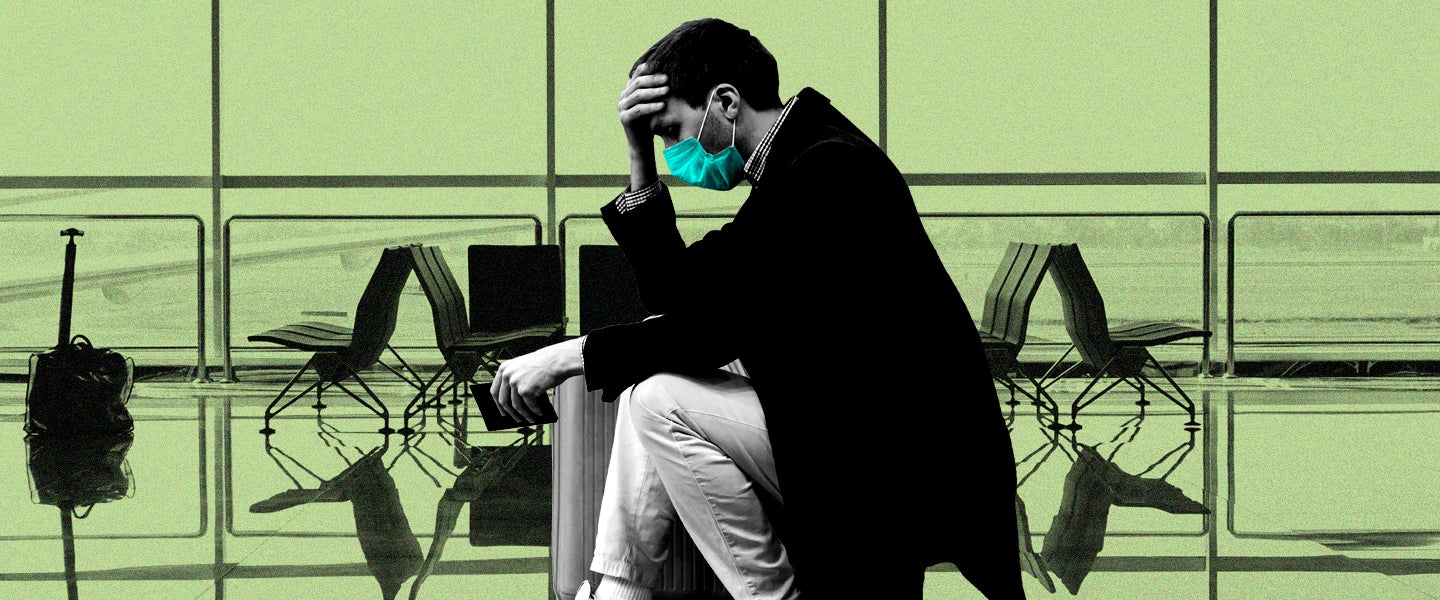I’d love to be home in Massachusetts right now, but that would require a six-hour flight or 43-hour drive. Quite frankly, after reading some recent accounts of what it’s like to fly at the moment, I’d feel safer driving. While you might travel through a nearly empty airport and fly on a barely populated plane, you might also have the opposite experience.
If you’re getting on a plane any time soon, I’m sure it’s not for leisure. Regardless of why you have to fly in the coming months, you ought to prepare yourself now to mitigate the risk of getting sick. This starts with buying the ticket. But your options here might be another area where you have limited control: Many airlines have drastically cut their number of flights. American Airlines, for example, flew only 20 percent of its May schedule compared to the year prior. Though it plans to fly 55 percent of its flights in July, that’s still a significantly smaller pool of choices for many fliers. Basically, this translates to two things: fuller flights and more layovers, neither of which are very appealing when it comes to viruses.
The problems with full flights are obvious — the more people aboard, the less opportunity there is to social distance. On some flights, social-distancing measures aren’t really being enforced at all, with economy sections still seating three to a row. According to the Centers for Disease Control and Prevention, airplanes themselves aren’t actually significant contributors to virus spread. “Most viruses and other germs do not spread easily on flights because of how air circulates and is filtered on airplanes,” the travel section of the site reads. “However, social distancing is difficult on crowded flights, and you may have to sit near others (within 6 feet), sometimes for hours. This may increase your risk for exposure to the virus that causes COVID-19.”
The bigger risk with air travel is actually on the ground, making a layover all the more dangerous. “Air travel requires spending time in security lines and airport terminals, which can bring you in close contact with other people and frequently touched surfaces,” the CDC website states. Obviously, adding an additional airport to your journey as the result of a layover multiplies your exposure to terminals, public restrooms and other “frequently touched surfaces,” though you may not need to go through an additional security line.
While the CDC doesn’t see airplanes as inherently contributing to virus spread, taking an additional airplane might double the number of people you’re exposed to, assuming that flight is full, too. If the name of the game in halting the spread of COVID-19 is staying away from the maximum number of people, a layover can throw a huge wrench in an already risky scenario. If you’re exposed to twice as many people and twice as many airports, then you have twice as many opportunities to catch the virus.
Browsing flight prices right now from L.A. to the airport nearest my childhood home for July, most of the choices require a layover. But, for $49 more roundtrip, I could snag the single nonstop flight available for any given day. While I don’t plan on flying anyways, some cost-benefit analysis makes putting down that extra money an obvious choice.

